World War One ship's bell recovered after 108 years
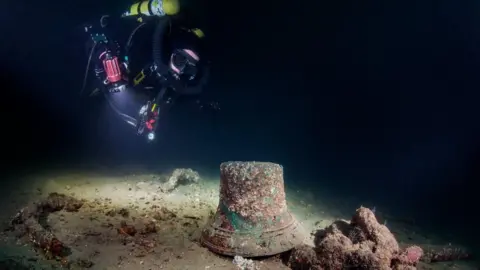 Marjo Tynkkynen
Marjo TynkkynenA bell from a World War One battleship - which sank with the loss of hundreds of lives in Scapa Flow in Orkney over a century ago - has been recovered by divers.
Two other artefacts from HMS Vanguard - a metal badge from one of the the main guns and a protective plug from a gun barrel, known as a tampion - have also been brought to the surface.
They will eventually be loaned to the Scapa Flow Museum in Orkney by the National Museum of the Royal Navy (NMRN) after conservation work has taken place.
The objects were identified by a team of divers who surveyed the wreck in 2017 as part of commemorations to mark the 100th anniversary of the sinking.
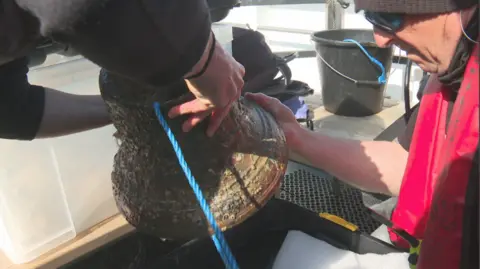
The project has taken three years of planning and has involved the Ministry of Defence, Orkney Islands Council (OIC), the NMRN and the Scottish government.
The sinking of HMS Vanguard is believed to be the biggest accidental loss of life in a single incident in the history of the Royal Navy.
The St Vincent-class dreadnought - a veteran of the Battle Of Jutland - was anchored alongside the rest of the Grand Fleet in Scapa Flow on 9 July 1917 when an explosion in a magazine saw her blow up and sink in just a few short moments.
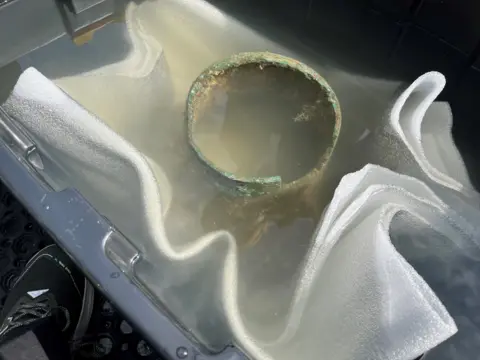
Only three of the 848 men onboard survived, one of whom died later from his injuries.
The wreck lies at a depth of 34m (110ft) and is protected under the Protection of Military Remains Act (1986) as a Sovereign Immune Wreck.
Special permission was secured to bring the artefacts to the surface which lay outside the wreck's current exclusion zone.
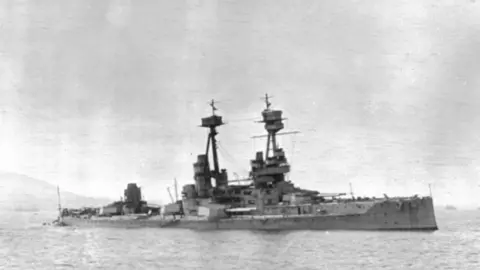 Orkney Library and Archive
Orkney Library and ArchiveWendy Sadler lost her great-grand uncle Henry Metcalf in the sinking of HMS Vanguard and is leading a project to try and find photos of as many of the crew as possible.
She said it was an emotional moment to be able to see and touch the bell.
"A hundred years-plus ago your relatives looked at it, heard it ringing," she said.
"To think of what happened to them that night, losing their lives, and it is not seen for another 110 years - it is a privilege and an honour.
"We can't stop doing things like this - them fading into history - we've got to keep their memory alive somehow."
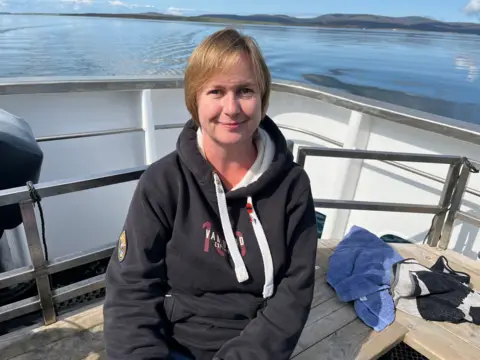
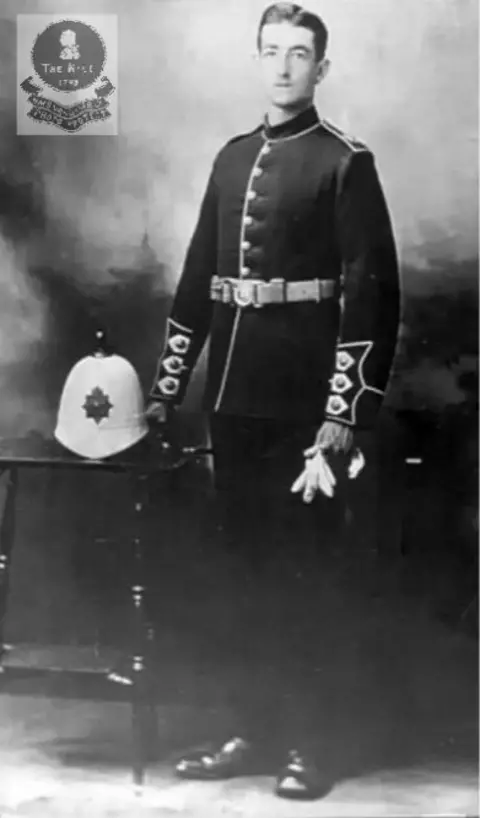 Wendy Sadler
Wendy SadlerExperts believe that the tampion is made from horse hair and leather and could have been preserved by silt.
The bell is distorted from the force of the explosion. It was found about 200m (650ft) from where the ship would have been located.
Nick Hewitt, a naval historian and also the culture team leader at Orkney Islands Council which runs a number of museums, thinks the bell will resonate with those who see it.
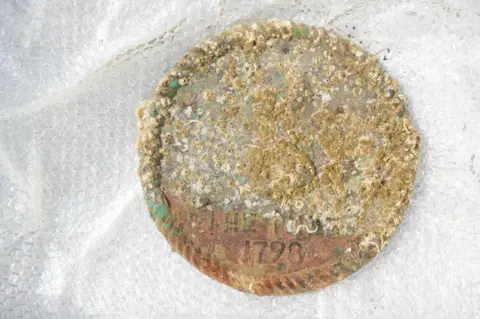 Orkney Museums, Orkney Islands Council
Orkney Museums, Orkney Islands Council"Our visitors will look at the bell and they will immediately feel what happened to that ship because it is distorted from the explosion - it is missing the crown that should be on top," he said.
"It has a hole on the top instead of a crown.
"Our plan is not to fully restore it, it is not going to look bright and shiny like the Royal Oak bell in the cathedral."
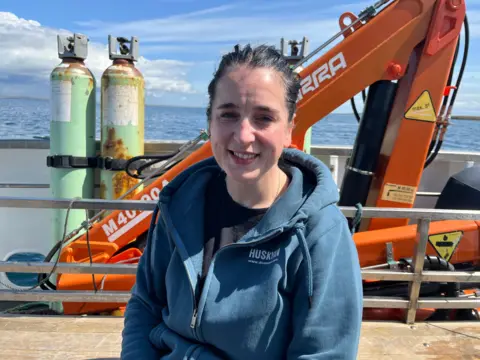
The project to recover the objects came about after survey work was undertaken by a team of divers led by Emily Turton, leading up to the centenary commemorations in 2017.
They spent a total of 500 hours mapping together the wreck site, which is spread over a large area.
She said it was emotional to be involved in a project which she had been part of for a number of years.
She added: "It was lovely to find artefacts that really pertained to the ship, rather than wreckage, along with other personal artefacts.
"There are musical instruments on Vanguard, there are the clothes and shoes they would have worn so those really have a personal connection."
